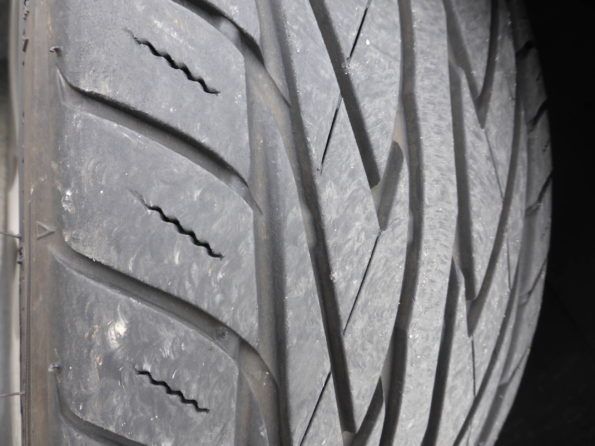For various reasons, drivers change their tyres for ones which have a different width to the ones that came as standard. There are limits to how much extra width you are allowed on a wheel rim.
Advantages of wider tyres
- Wider tyres generally give better lateral grip (even though the same weight of the car is spread over a wider area)
- Wider tyres often look more aggressive
- Wider tyres tend to mean more effective braking performance as there is more rubber in contact with the road
- Wider tyres can give more grip when accelerating, meaning less likelihood of wheelspin.
Disadvantages of wider tyres
- Wider tyres are more expensive than narrow tyres (as long as we’re talking about standard-width narrow tyres, not specialist tyres for veteran and historic vehicles). This makes sense:
- they contain more raw materials (rubber and metal)
- they are larger and heavier meaning they are more expensive to ship
- once over a certain size, they are produced in lower quantities, meaning fewer economies of scale in the manufacturing process
- very wide tyres are often specialist tyres for which the tyre company knows it can charge a premium
- Wider tyres tend to be heavier and this creates more inertia to get moving, but it also affects the braking, meaning the brakes need to be stronger to arrest the wheels’ motion. This is especially a concern on large SUVs
- Wider tyres are proportionally more likely to pick up road debris such as a nail through the simple fact that they cover more road area
- Wider tyres on the front of the vehicle make the steering heavier due to more rubber in contact with the road and a heavier overall wheel weight
- Wider tyres on the front leads to a larger turning circle because the wheels cannot turn as far without the tyres contacting the inside of the wheel well
- Tramlining (where the tyre pulls the car in different directions based on the road’s undulation) tends to be worse with wider tyres.
- Wider tyres are more likely to aquaplane in standing water as there is a larger surface area with less relative weight on it
- On snow, slush and ice, narrower tyres perform better as the weight of the vehicle is concentrated in a narrower area, thus making it easier for the tyre to bite into the surface
- Because more rubber is in contact with the road, they can create more road noise
- Wider tyres can have more rolling resistance, i.e. the force required to overcome their deformation on the road surface is higher than for narrower tyres because there’s more tyre to deform, however, this is ultimately dependent on the air pressure in the tyre
- As the tyre pressure tends to be higher, ride comfort is compromised – the ride will be bumpier and harsher
- The manufacturer tunes the suspension and steering geometry based on a tyre of a specific width and weight. Changing this can lead to negative outcomes.

Should you get wider tyres?
If you want your car to look more aggressive, then a wider tyre is an easy way to achieve this. On your existing rims, it’s often possible to increase the width 20mm. If you want any more than this, then you will need to change the rims to accommodate the wider tyre.
It is illegal to fit new tyres that don’t have at least the same load rating as the tyres you are removing. The best option is to talk to a qualified tyre technician to work out your options.
